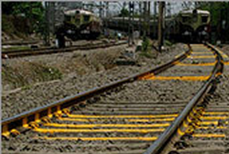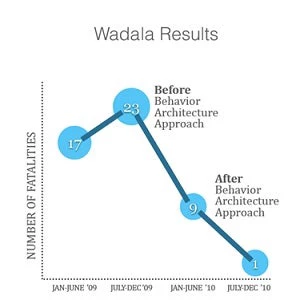The following post is a part of a series that discusses 'mind and mindsets,' the theme of the World Bank’s upcoming World Development Report 2015.
If you had to guess, what would you say is the leading cause of unnatural deaths in Mumbai, one of India’s largest cities? Fire? Car wrecks? Suicide? In fact, the number one cause of unnatural deaths in Mumbai is railway track accidents.
According to India Railroad, in Mumbai, 10 people die everyday crossing the railway tracks. This amounts to more than 3,500 people a year, only in Mumbai. In fact, 15,000 people are killed every year while crossing rail tracks in India. But what causes these accidents? Is it because the individuals don’t know when the train is coming? Do they have poor visibility?
To answer these questions, a Mumbai-based behavioral science and design firm called FinalMile started to study the circumstances under which these accidents occurred. Before even considering possible solutions, they found that it was imperative to diagnose the underlying behavioral and structural architecture that was leading to these railway accidents.
One intuitive hypothesis the team explored was that poor visibility hampers an individual’s ability to see the train coming and therefore appropriately assess the risk of getting hit by it. To test this hypothesis, Finalmile, studied the number of railway incidents in different railway stations in India that had varying visibility for the crossers.

The theory of risk compensation helps explain the differences in the number of accidents between the railway stations with high visibility and low visibility. The theory suggests that people typically adjust their behavior in response to the perceived level of risk, becoming more careful where they sense greater risk and less careful if they feel more protected. So, in stations with greater visibility, individuals feel more protected because they believe that they can see how far away the train is. FinalMile hypothesized that the increased visibility led people to perceive lower risk because they could see that either there was not a train nearby, whereas in stations with low visibility, in the absence of visual cues people perceived greater risk of a train suddenly coming. Unfortunately, however, the moving train induces errors in visual processing leading people to misjudge the speed of the train, in turn leading to more deaths.
 What can be done to prevent these deaths? Clearly, one approach is to invest in infrastructure around the railway tracks to prevent people from crossing the rail tracks. This method is not only costly (having to barricade off the entire train tracks and maintain these barricades), it also may require education and enforcement.
What can be done to prevent these deaths? Clearly, one approach is to invest in infrastructure around the railway tracks to prevent people from crossing the rail tracks. This method is not only costly (having to barricade off the entire train tracks and maintain these barricades), it also may require education and enforcement.
FinalMile decided that this behavioral problem required a behavioral intervention. They painted alternate ties of the railroad tracks yellow, enabling people to better gauge the speed of approaching trains. Having this reference point sent a clear signal about how fast the train was moving. The graph below shows the number of deaths, at the Wadala Station, before and after the interventions.
Since then, the Indian Railway has implemented the solution in four new locations and monitored results. It has reduced fatalities upto 71% in some of the stations in India. This case shows that understanding the causes of human decision-making and behavior are crucial in designing interventions. If a problem has a behavioral component, it might be best tackled with a behavioral solution, which in this case, was much less costly and more effective. The World Development Report of 2015, Mind and Mindsets, is exploring ways in which a richer understanding of the human actor and its behavior can improve policy design, implementation and evaluation.


Join the Conversation